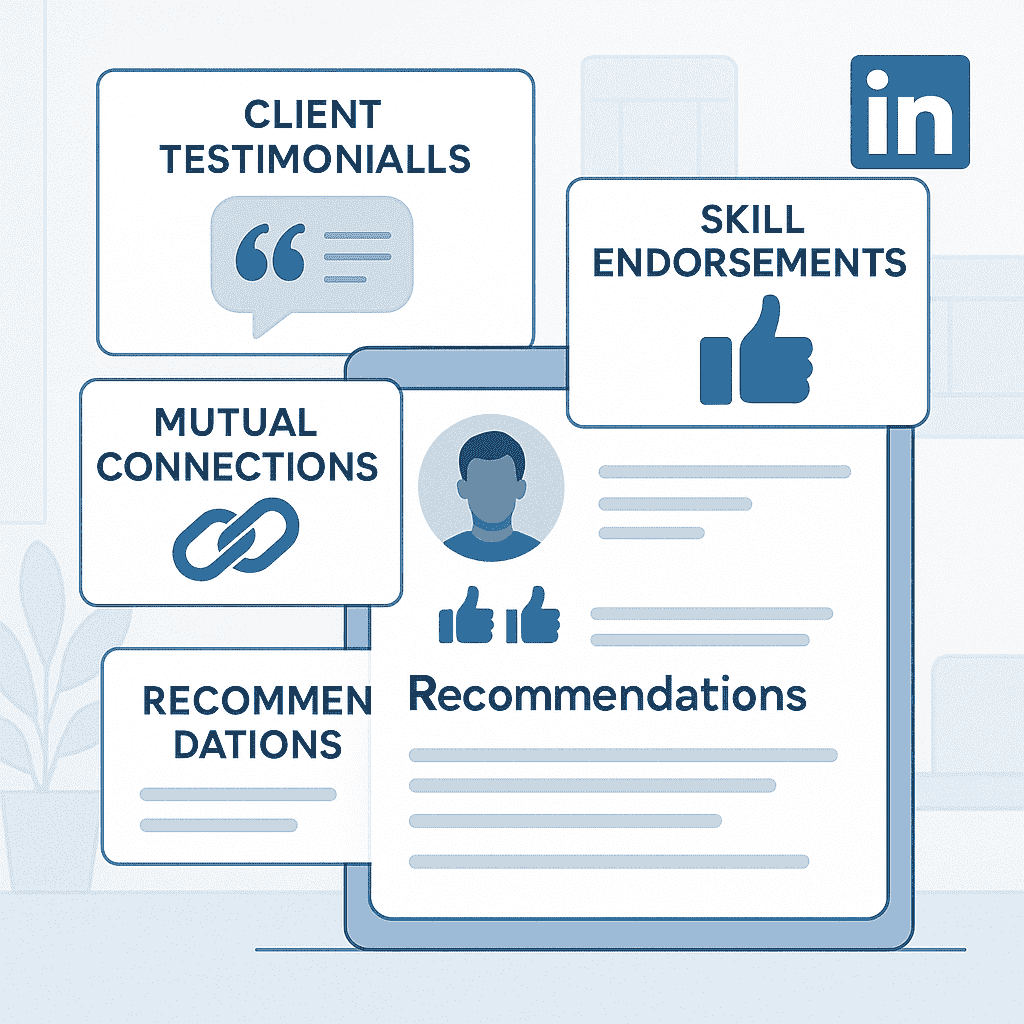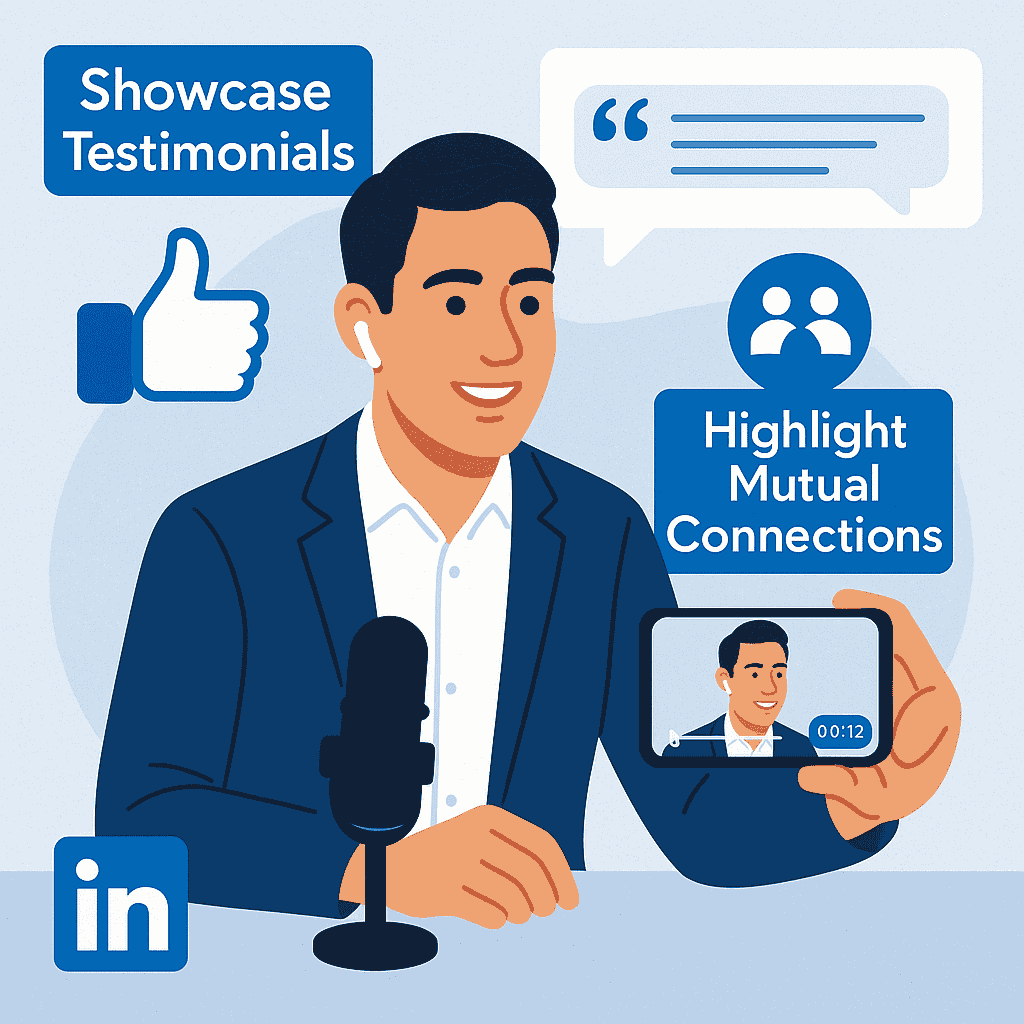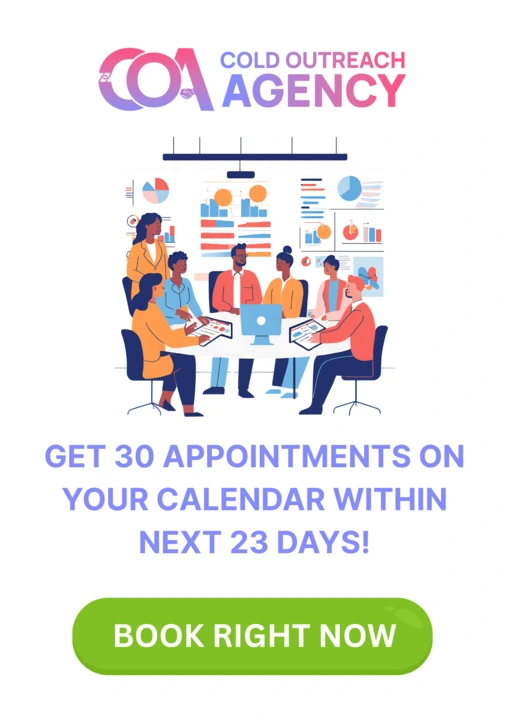When I’m doing cold outreach on LinkedIn, I know I’ve got just a few seconds to grab attention, and even less time to build trust. Most prospects have their guard up. They’ve been spammed with pitchy messages, generic templates, and random connection requests that don’t offer real value. That’s why I don’t just rely on personalization or clever wording. Instead, I use social proof to establish instant credibility and lower resistance right out of the gate.
Social proof is one of the most powerful psychological triggers in outreach.
When done right, social proof helps me break through skepticism, warm up leads faster, and position myself as someone they should talk to, not just another seller in the inbox. In this article, I’m sharing exactly how I build trust quickly with LinkedIn outreach using different forms of social proof—what works, what to avoid, and how to turn that trust into real conversations and booked calls. Let’s dive in.
Why Trust is Everything in LinkedIn Outreach
- “Who is this person?”
- “Why are they messaging me?”
- “Can they help me?”
- “What do others think about them?”
If I can answer these questions fast and positively, I win their attention.
Social proof shortcuts that process.
Types of Social Proof That Work Best on LinkedIn

Over the years, I’ve tested dozens of ways to insert social proof into my outreach. Here are the ones that work best—and how I use them:
1. Client Logos or Big-Name Associations
Nothing builds trust faster than showing us relevant niche brands my prospect would respect.
2. Mutual Connections & Network Overlap
LinkedIn is a social platform. When someone sees we have mutual connections, their guard goes down automatically.
In my outreach message or follow-up, I might say:
“Noticed we both know [Mutual Connection] and a few others in the SaaS space. Figured it made sense to connect.”
If I have a high percentage of connections in their industry, I bring that up:
“I work with over 120 SaaS founders in your space—saw you’re also in the growth stage, so figured I’d reach out.”
3. LinkedIn Profile Optimization with Trust Signals
Before they reply to my message, 9/10 people check my profile. That’s my golden opportunity to build credibility instantly.
Here’s how I structure my profile for maximum social proof:
- Headline: Clear about who I help and the results I get.
“Helping B2B Agencies Book 10–20 Qualified Sales Calls Per Month | Clients: XYZ, ABC” - Banner Image: Shows logos of clients or testimonials, brief value prop.
- About Section: Case study style—who I help, what results I get, backed with numbers.
- Featured Section: Testimonials, interviews, results screenshots, or posts with high engagement.
My goal is to show them:
“Other people have trusted me—and here’s the proof.”
4. Testimonials & Case Studies in Conversation
I try to keep my cold messages short. But once someone replies or shows interest, I build trust by sharing a quick story or link:
Example:
“Here’s a 1-min clip where one of our clients explains how we helped them go from 3 to 18 demos/month: [Link]”
Or:
“We recently helped a SaaS founder in a similar position add 32K MRR in 60 days through LinkedIn and email—happy to break that down if helpful.”
Short, specific, and measurable stories work best.
5. Engagement on My Content
If I’m posting regularly on LinkedIn and I get comments or likes from people in my niche, I use that in my outreach.
Example:
“Saw you’re scaling a SaaS product—recently posted something similar that got good engagement from a few SaaS VPs. Thought you might find it relevant.”
When prospects see I’m active, respected, and valuable in their ecosystem, trust builds fast. Bonus if my content shows proof of what I do (like client results).
6. Group Memberships or Communities
This is underrated. If I’m part of a mastermind, private Slack group, or community, and my prospect is too, that’s instant credibility.
“Saw you’re in [Community Name]—I’m part of that too. Always great conversations there.”
Even better if I can name-drop someone they know (but keep it respectful).
Cold Message Templates with Social Proof Included
Here are a few frameworks I use that blend personalization and social proof:
Connection Request Message
“Hey [First Name]—noticed you’re growing a [type] SaaS. I work with similar founders like [Client 1] and [Client 2] to help book 20+ demos/month via LinkedIn. Thought it made sense to connect.”
Why it works: Short, clear, relevant, and instantly shows I’m not a random spammer.
First Message After Connecting
“Appreciate the connection! Just to share context—I work with founders like [Name] at [Company], helping them scale outbound and fill their calendar with qualified demos. Curious, is LinkedIn a big part of your sales strategy right now?”
Why it works: Name-dropping a real client + asking a low-friction question.
Follow-Up Message with Case Study
“Quick story: we helped a B2B SaaS grow from 5 to 23 qualified calls/month in 6 weeks using a similar LinkedIn flow. If it’s relevant, happy to break down what we did.”
Why it works: Gives proof + offers value without pressure.
How I Use Content to Amplify My Social Proof
If I’m just relying on DMs to build trust, I’m leaving money on the table. My LinkedIn content acts as passive social proof—so even before someone replies, they already see my credibility.
Here’s what I post:
- Client wins: Screenshots, graphs, anonymized results.
- Mini case studies: Short posts explaining what I did and what happened.
- Behind the scenes: Sharing how I run campaigns builds authority.
Advanced Strategy: Use Other People’s Social Proof (Borrow Authority)
If I’m new and don’t have big client wins yet, I borrow credibility.
How?
- I’ve studied strategies used by [Well-known Company/Person]
- Share articles/posts/interviews with results from experts and position myself as the person implementing those methods for others
- Reference trends, reports, or data-backed methods in my niche
Example:
“We’re using a multi-channel outreach strategy modeled after what Gong and Outreach.io did to scale outbound results—happy to share how we’re applying it to smaller SaaS teams.”
It shows I’m not guessing. I’m tapping into proven systems.
Common Mistakes When Using Social Proof in Outreach
Even though social proof works, it’s easy to mess it up. Here are a few mistakes I see:
Name-dropping without context: Just saying “worked with X” is lazy.
Bonus: How I Turn Social Proof Into a Booking Machine
Once trust is built, my goal is to guide the prospect to the next step—usually a call. I use soft CTAs like:
- “Happy to share more details if relevant.”
- “Want me to send over a quick breakdown of how we did this for [Client Name]?”
- “Would it make sense to unpack if this could work for your team, too?
Why Social Proof Works Psychologically (Deeper Breakdown)
Go beyond just the idea of social proof and explain why it works on the human brain. Dive into concepts like:
Trust by Association: If a respected brand or person trusts you, new people will too.
A short behavioral psychology angle helps give weight to your methods, especially for a B2B audience that appreciates logic.
Optimizing the LinkedIn Profile for Social Proof (Visual Breakdown)
You can expand the profile optimization section into its own topic, covering things like:
What to put in your LinkedIn headline to boost credibility
How to design a banner image that shows authority without looking cluttered
What to include in your About section (with a copywriting formula: [Who I Help] + [What I Do] + [Proof or Results])
How to structure your Featured section to act like a landing page
Include examples of strong vs weak profiles, or even mock layouts.
Where to Collect Social Proof If You’re Just Starting
Create a topic for people who don’t yet have results or testimonials, with steps like:
Offering free work in exchange for testimonials
Doing a “case study challenge” where you help 3 prospects and document results
This empowers newer outreach specialists or agency owners who haven’t built a big portfolio yet.
How to Use Social Proof in LinkedIn Voice Notes and Videos

Go beyond text outreach—talk about using voice notes and short videos (30–60 seconds) to establish a deeper emotional connection while layering in social proof. Discuss how to:
Mention client results naturally in voice notes
Show a testimonial or a quick screen recording in a video
Build authenticity with facial expressions and tone
This topic is great because LinkedIn prioritizes native videos and messages with rich media.
Building a Social Proof Engine with Consistent Content
Instead of using social proof reactively, build a system that generates it constantly through content. In this section, we cover how to:
Create a weekly ritual of posting mini case studies or behind-the-scenes wins
Turn results into “proof-based posts.”
Engage with your client’s posts to amplify social validation
Use content comments as inbound social proof
You can also talk about how content + DMs create a trust loop that strengthens your entire outreach funnel.
Mistakes to Avoid When Using Social Proof in Outreach (Expanded Section)
Turn this into a full-blown listicle or checklist with common blunders, such as:
Overhyping results (which looks scammy)
Using irrelevant clients just because they’re big names
Sounding robotic or formulaic when dropping testimonials
Using fake or unverifiable testimonials (and how it backfires)
Bragging without context (“I made $100k for a client” vs. “We helped X scale to $100k in MRR in 90 days by fixing outbound”)
Add examples of how to fix each mistake so it’s actionable.
Creating a Social Proof Content Bank (Templates + Organization)
You can also include a section on how to organize social proof assets, such as:
Testimonials (text, video, LinkedIn comments)
Screenshots (call booking dashboards, CRM screenshots, DMs)
Logos and brand images
Case studies (short and long format)
Client quotes from Slack, WhatsApp, or calls
Explain how you can store these in a Notion page, Google Drive folder, or even inside your CRM—ready to plug into your profile, messages, or landing pages.
Using Social Proof in Other Outreach Channels (Multi-Channel Integration)
Make it broader by explaining how to carry social proof across multiple platforms:
On cold emails: Using a quick 1–2 line client win
On Twitter/X: Sharing client screenshots as micro-case studies
On landing pages: Embedding proof above the fold
In cold call openers: Using referrals or mutual contacts
This turns your LinkedIn strategy into a multi-channel trust-building system.
Tracking the Impact of Social Proof on Outreach Metrics
Close with a data-driven section where you encourage readers to measure the difference social proof makes.
Track metrics like:
Connection acceptance rate
Response rate to cold messages
Profile views
Call booking rate from the first contact
Comment and share count on social proof content
Even simple A/B testing—one version of a message with proof, one without—can demonstrate why this tactic matters.
Conclusion: Build Trust First, The Rest Will Follow
It’s in my profile headline, my messages, my content, and my follow-ups. Sometimes it’s direct, like mentioning a client result. Sometimes it’s implied—like a testimonial or a screenshot showing engagement. But it’s always there, doing the quiet work of building trust.
And here’s the thing: I don’t need big brand names to make social proof work. What I need is relevance. If I’m reaching out to a SaaS founder, a result I got for another SaaS founder—no matter how small—is 10x more powerful than saying I worked with a Fortune 500 company in a different niche. Specificity builds trust. Relevance builds interest.
If I’m just starting and don’t have those client wins yet, I can still position myself well. I can create content around proven frameworks. I can reference case studies from industry leaders and show how I apply those learnings. I can offer value upfront and start conversations that lead to testimonials and results. Every expert starts somewhere, and social proof compounds over time.
Ultimately, my goal with LinkedIn outreach isn’t to get a sale on Day 1. It’s to create enough trust and relevance that the prospect says, “Sure, I’ll hear you out.”
Trust first. Results follow. That’s the game.
FAQs: Building Trust in LinkedIn Outreach with Social Proof
Q1: What if I don’t have any clients yet—how can I build social proof?
Start by offering free or discounted help to a few people in your niche and get results/testimonials. You can also borrow authority by referencing strategies from well-known companies or experts.
Q2: Should I include social proof in every message?
Not always. Your first message should focus on relevance and value. Sprinkle in social proof naturally—especially in follow-ups or when they check your profile.
Q3: What’s the best kind of social proof for SaaS outreach?
Client results (with numbers), testimonials from other SaaS founders, and recognizable logos work best. Even better if they’re similar in size, industry, or problem space to your target.
Q4: How do I display social proof without sounding arrogant?
Keep the tone humble. Share stories, not stats. Use phrasing like “we were lucky to help,” or “one client saw…” to soften the delivery.
Q5: What role does content play in building trust?
A huge one. Your content should reflect what you do, how you do it, and who it’s for. When your DMs and your content are aligned, people are much more likely to trust and book with you.
If you’re doing LinkedIn outreach and want faster replies, better conversations, and more booked calls, start weaving social proof into every touchpoint. It’s the fastest way to go from “cold stranger” to “trusted expert.”
Let your results do the talking.

